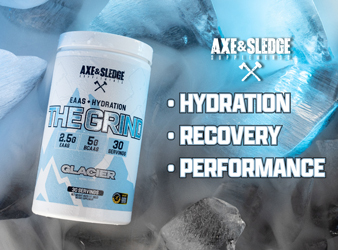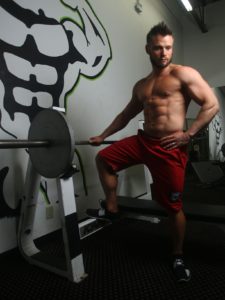KISS: Keep It Simple Stupid. When you’re new to lifting, things can seem overwhelming. Here are three basic principles critical to success and without any fluff.
If you’re just getting going in the iron-game, it can be really hard to know where to start, who to trust, and what to do when it comes both exercise and dietary advice. There are literally 10s of thousands of businesses and self proclaimed “experts” all trying to convince you that their products are the best, or that they’ve uncovered secret exercise methodologies that you NEED in order to get results. Thankfully, there also some resources out here like Fitness Informant that are actually here to HELP, rather than sell you a bunch of bullshit and hype you don’t really need. And never mind confuse you in the process.
Yes, there have been advances in supplement design over the years. And yeah, as time passes there are more and more training systems to seemingly to choose from, often with guys who weigh 300lbs and are three-percent body-fat promising you if you just listen to them—you’ll look like them in short order. Sound too good to be true? Probably is.
But here’s a little secret that won’t make anyone any money but can most definitely help you find results: what’s always worked—still works and there are a few basic things we all need to account for. Before you worry too much about having the latest and great pre-workout, or the right colored blood-flow-restriction-training straps to match your new fancy flat-bottomed lifting shoes and tights—here are three things to make sure you’ve got a handle on first.[/vc_column_text][/vc_column][/vc_row][vc_row type=”in_container” full_screen_row_position=”middle” scene_position=”center” text_color=”dark” text_align=”left” overlay_strength=”0.3″][vc_column column_padding=”no-extra-padding” column_padding_position=”all” background_color_opacity=”1″ background_hover_color_opacity=”1″ column_shadow=”none” width=”1/1″ tablet_text_alignment=”default” phone_text_alignment=”default” column_border_width=”none” column_border_style=”solid”][image_with_animation image_url=”6658″ alignment=”center” animation=”None” box_shadow=”none” max_width=”100%”][vc_column_text]
Make Nutrition a Priority
By definition, a supplement is supplementing something else—that’s why it is in-fact– called a “supplement” and not a “solution.” They can be fun to buy and talk about, I get it. But before you worry about whether you should buy the chocolate or vanilla flavored protein powder, the whey or the casein,—have an honest conversation with yourself about your regular food intake first. Are you eating a diet rich in high quality whole foods? Quality proteins and starch are critical for putting on any appreciable muscle mass—and getting these things in the right amounts is important as well. If I had a dollar for every time someone told me “I eat a lot but I don’t gain any weight” I’d be rich. Busllshit. Newsflash—you’re not defying the first law of thermodynamics. So, if you are “eating a lot” but not gaining weight—you aren’t eating enough, it IS that simple. (Same applies incidentally if your goal is weight loss—if that scale isn’t going down, you’re consuming too much relative to what you’re burning—end of story. It’s not because you’re missing some fat burner.)
One thing the gym-going crowd often seems to forget about is vegetables. While not as sexy as that big cut of red meat—vegetables are critical for too many reasons to list. They keep you running optimally and provide loads of micro-nutrition that we all need to function at our best. And that’s before we even look at things like the positive effect of the fiber they provide on gut-health.
Just like workouts, consistent nutrition is important and a fundamental building block of anyone who is going to have success in the gym. If your diet is inconsistent, or built around fast or convenience foods, or your more worried about your pre-workout consumption than your vegetable consumption—it’s time to get honest with yourself and make some changes. Supplements can certainly help, but its critical to understand this starts with real food first.[/vc_column_text][/vc_column][/vc_row][vc_row type=”in_container” full_screen_row_position=”middle” scene_position=”center” text_color=”dark” text_align=”left” overlay_strength=”0.3″][vc_column column_padding=”no-extra-padding” column_padding_position=”all” background_color_opacity=”1″ background_hover_color_opacity=”1″ column_shadow=”none” width=”1/1″ tablet_text_alignment=”default” phone_text_alignment=”default” column_border_width=”none” column_border_style=”solid”][image_with_animation image_url=”6660″ alignment=”center” animation=”None” box_shadow=”none” max_width=”100%”][vc_column_text]
Be Willing to do the Work
There is no supplement or work around for attitude and work ethic. When it comes to building muscle in the gym, what you’re willing to do and the time you’re willing to put in will trump almost everything else–save perhaps diet. Look, I like going to the gym most of the time, but I have days where I feel tired, have a work or family thing going on, or something else pops up. But I go those days to, because you know what? Consistency can NOT be over stated. If you only go the gym when the stars align, and everything is perfect—I hate to be the one to tell you– but you’re not likely to experience much in the way of results. Don’t tell yourself you’re too busy because you likely aren’t–and the first time you tell yourself that, it’s that much easier to use the same excuse next time. Priorities get done, don’t over complicate it.
If getting to the gym is step one, step two is doing shit that matters when you get there. That means doing what needs to be done instead of just doing what you like. Don’t be the idiot doing curls in the squat rack, especially when your best 1RM on a squat is 85lbs. Are you willing to get under a weight that might make you a little nervous from time to time? Are you willing to try and bang out one more rep when your legs feel like they’re on fire? Are you willing to push outside your comfort zone?? Because you know grows in the comfort zone? Body fat, not muscle.
You know what makes me want to slap people? And guys—this is way more common with us than the ladies… “Well, uh, I don’t really do leg day because my legs get plenty of work through my cycling. “ Or skiing. Or whatever. Really dude??! Translation: legs are hard and I don’t like to put that mean heavy bar on my back, cause it hurts me!! So I make shit up to convince myself this is ok.” Or leg day is all leg-presses and seated-knee extensions. Look, if you’ve got an injury, or are further down the road in your training life—there certainly can be a place in a program for both leg-pressing and knee-extensions. The latter is a great quad-isolation move that body builders have used for years. But—odds are, that isn’t you. If you’re doing leg-presses and calf-raises for leg day because “squatting is hard” and you don’t like it? Well– time for a reality check. Axial loading (like a barbell back squat) will make your whole body stronger, and the hormonal response will benefit your whole body, not just your legs. Don’t short change yourself.
Show up, show up consistency and work hard. There is no way around this, and this brings me to my final point.[/vc_column_text][/vc_column][/vc_row][vc_row type=”in_container” full_screen_row_position=”middle” scene_position=”center” text_color=”dark” text_align=”left” overlay_strength=”0.3″][vc_column column_padding=”no-extra-padding” column_padding_position=”all” background_color_opacity=”1″ background_hover_color_opacity=”1″ column_shadow=”none” width=”1/1″ tablet_text_alignment=”default” phone_text_alignment=”default” column_border_width=”none” column_border_style=”solid”][image_with_animation image_url=”6661″ alignment=”center” animation=”None” box_shadow=”none” max_width=”100%”][vc_column_text]
Get Really Good at the Basis
In their book, “New Rules for Liftings” Schuler and Cosgrove take the approach that human body is capable of producing six foundational level movements: pressing, pulling, squatting, hinge, lunge and rotation. I’ve trained hundreds of people and I really like this way of thinking initially because it keeps things relatively simple conceptually when people are new.
When you are starting out, get really, really good at these basic movements and make progress with them before you worry about more advanced programing and modalities. It blows my mind when I walk through most gyms at what I see. Take the bench press, “how much ya bench bro?” You’ll see guys who have elbows flared at 90 degrees to their shoulder instead of tucked. Zero upper-back tightness or arch, and when they struggle to press that sucker up?? You get that one leg coming off the floor and flailing around in space like Dido’s white flag of surrender. If you can push any real weight, you already know total body tightness is key (as it is on every lift) and leg drive can help you press a big weight. Same is true with a good squat—there is a lot more going on there than simply throwing the bar on your back and releasing the brakes and letting gravity take over. Understand this stuff—and then work to master it. Even at 25 years into this stuff, I am constantly trying to set my shoulders tighter and always working on my set up—and I’m still able to make incremental improvements. It might not seem as exciting as trying that new pump-arm workout you saw on the cover of Suns-Out Guns-Out Magazine, but you’re laying down a foundation for long term success.
If you can’t bench, squat and dead your own body weight (and hopefully then some) don’t spend tons of time on things like direct arm work, worrying about your quad sweep or spend hours trying to bring up your rear delts. Nothing will build total body strength like heavy compound movements, and the best tools in any gym and those barbells and dumbbells-get to know them.[/vc_column_text][/vc_column][/vc_row][vc_row type=”in_container” full_screen_row_position=”middle” scene_position=”center” text_color=”dark” text_align=”left” overlay_strength=”0.3″][vc_column column_padding=”no-extra-padding” column_padding_position=”all” background_color_opacity=”1″ background_hover_color_opacity=”1″ column_shadow=”none” width=”1/1″ tablet_text_alignment=”default” phone_text_alignment=”default” column_border_width=”none” column_border_style=”solid”][divider line_type=”Full Width Line” line_thickness=”2″ divider_color=”default” custom_height=”10″][/vc_column][/vc_row][vc_row type=”in_container” full_screen_row_position=”middle” scene_position=”center” text_color=”dark” text_align=”left” overlay_strength=”0.3″][vc_column column_padding=”no-extra-padding” column_padding_position=”all” background_color_opacity=”1″ background_hover_color_opacity=”1″ column_shadow=”none” width=”2/3″ tablet_text_alignment=”default” phone_text_alignment=”default” column_border_width=”none” column_border_style=”solid”][vc_column_text]
About The Author
Chris Bremner, NSAM CPT is a Level 1 Resistance Training Specialist (RTS) and a Precision Nutrition Certified Coach, while holding numerous certifications from NSAM. Chris has been around gyms since he was 13 years of age. Chris currently runs his own personal training business (Trend Healthy) and is the head trainer at one of the nation’s largest privately owned companies.
Chris is passionate about helping others achieve the best versions of themselves through better health and fitness. To date, Chris has helped trained hundreds of people and have helped them reach their goals over the years.







